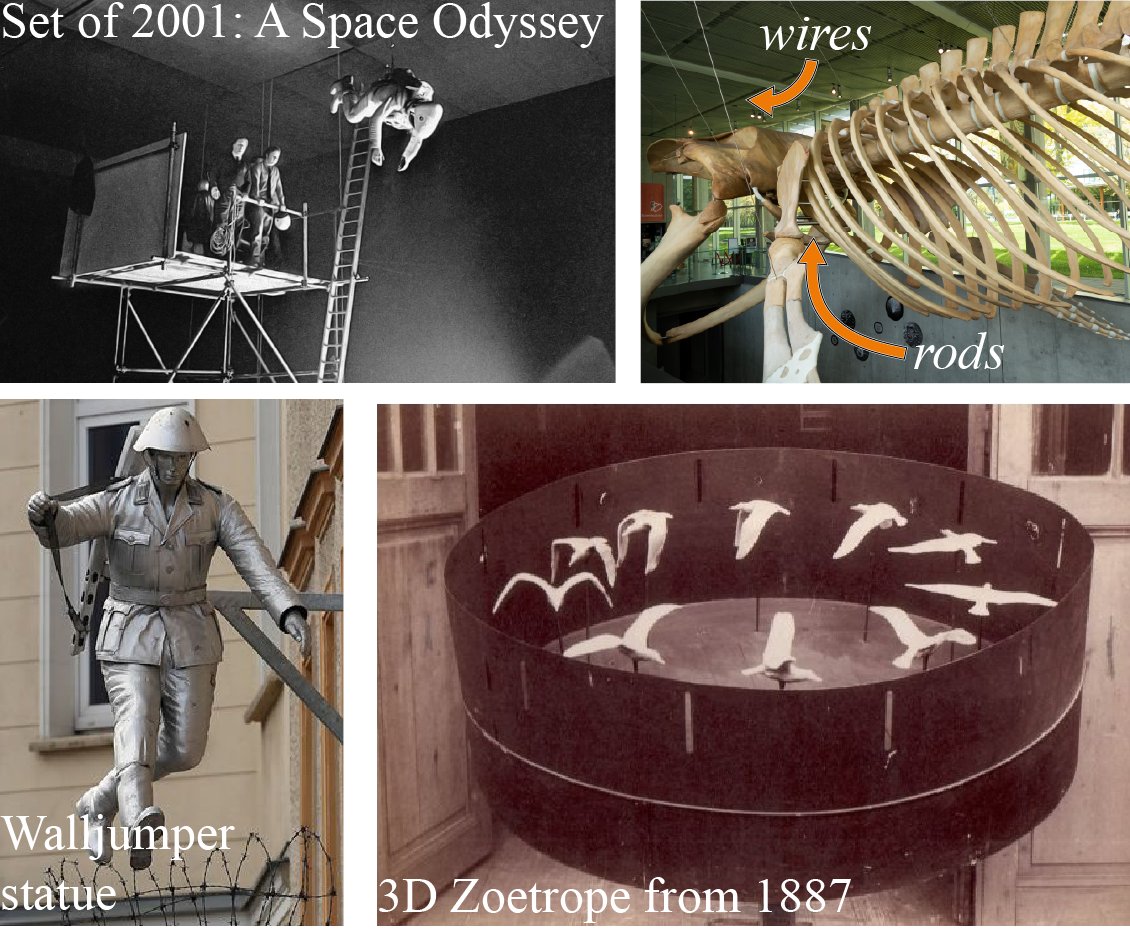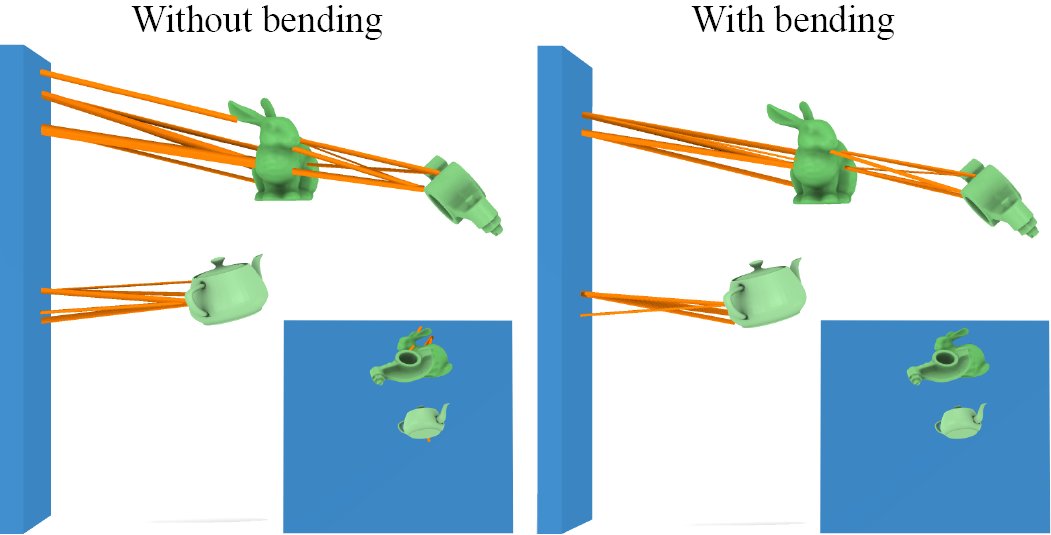I am excited to share my #Eurographics2021 paper with Risa Ulinski, @diwlevin, Karan Singh, @_AlecJacobson, “Levitating Rigid Objects with Hidden Rods and Wires.”
We make objects appear as if they are floating with a simple and elegant linear program!
https://www.dgp.toronto.edu/projects/levitating-rigid-objects/">https://www.dgp.toronto.edu/projects/...
We make objects appear as if they are floating with a simple and elegant linear program!
https://www.dgp.toronto.edu/projects/levitating-rigid-objects/">https://www.dgp.toronto.edu/projects/...
Motivation for this problem is seen in many places like movie and theatre sets, museum exhibits, and 3D zoetropes where objects are held up by supports that must be invisible from certain angles.
We are able to find the optimal sparse set of rods and wires to rigidly hold objects in place that is most hidden from given viewpoint distributions.
Ground structure methods start with a dense bipartite graph between points on object’s surfaces and *select* the edges which will become rods or wires. We also prune the ground structure!
Previous ground structure methods model the rods with tension/compression forces but we also account for bending by approximating with a linear shearing force on the rods, which allows us to obtain even less visible solutions.
While force balance requirements are enforced with linear constraints (must hold the objects), we add a visibility term to the objective (should be as hidden as possible). To compute the visibility of an edge, we sample rays from viewpoint distributions to points along the edge.
With a linear program minimizing the total volume (edge lengths times unknown areas) + the total visibility, we are able to yield the sparse globally optimal set because the L1 norm is sparsity inducing.
Time for some fabrication results! Wires can be thought of as tension-only rods with negligible visibility so we don’t have to compute it here.
Rods must attach to solid geometry so the ground structure is only made of edges that attach to the ghost’s head. But the thin sheet on the ghost is used for visibility computation since rods can safely hide behind it.
Our system can also give solutions made of both wires and rods. By maintaining separate graphs for rods and wires, we can apply differing visibility weights and yield stress constraints based on which materials are going to be used in fabrication.
Finally, and most excitingly, we 3D printed an animated cartoon doing a backflip in this 3D zoetrope!

 Read on Twitter
Read on Twitter







